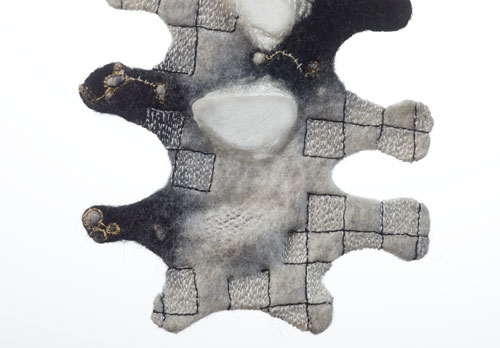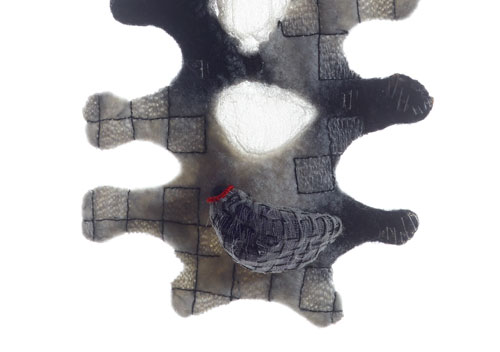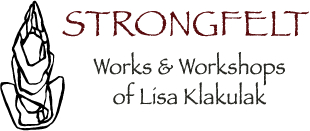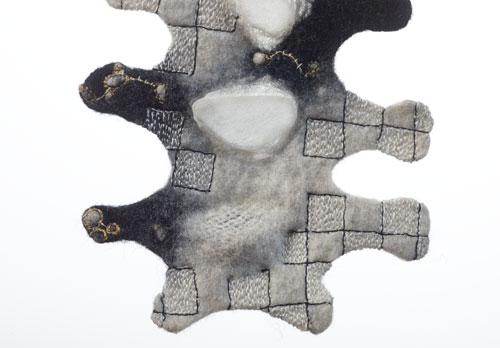
 I closely observe the materials I choose to work with. I had mentioned making wet felted partial felt from DHG’s Merino Top. I had laid it out very fine giving it approximately 90% shrinkage. I had fulled it to 60-70% of its possible shrinkage before I cut the fence patterning from it and from the white needle felted batts from DHG. The black wet felted partial felt shrank down smaller than the same fence shapes cut of the white needle felted sheets because they were thicker with more wool/area. The black partial felts were also thinner when fulled and had more drape. The white needle felted batts, being thicker, had more airspace to compact with the machine stitching, offering me the ability to emboss the surface. One material or approach isn’t necessarily better than another, just simply different. If you pay attention and study your materials you can choose what products or ways of working will best achieve your desired effect.
I closely observe the materials I choose to work with. I had mentioned making wet felted partial felt from DHG’s Merino Top. I had laid it out very fine giving it approximately 90% shrinkage. I had fulled it to 60-70% of its possible shrinkage before I cut the fence patterning from it and from the white needle felted batts from DHG. The black wet felted partial felt shrank down smaller than the same fence shapes cut of the white needle felted sheets because they were thicker with more wool/area. The black partial felts were also thinner when fulled and had more drape. The white needle felted batts, being thicker, had more airspace to compact with the machine stitching, offering me the ability to emboss the surface. One material or approach isn’t necessarily better than another, just simply different. If you pay attention and study your materials you can choose what products or ways of working will best achieve your desired effect.
The bottom beach glass encasement in the first image of the outer side of the back piece shows the white wool gauze as it shrank down in the fulling process. As the wool gauze encasement side shrinks and the silk fabric side did not, the beach glass was pushed to protrude more from the other side. The holes in the fabric grid between the warp and weft can still be seen, but had the white needle felted sheet had more shrinkage like the black partial felt those holes and the structure of the woven wool gauze would no longer be visible.
The second image showing the inside view of the back piece, back lit, reveals how the bottom piece of beach glass is pushed out unlike the pieces of beach glass above it that are held in the middle of the fabric. This image also reveals the gorgeous detail of the light shining through the machine stitched squares. When the light shines from within and radiates through and out more is revealed then when the spotlight is directed, absorbed, lessened and then reflected….

